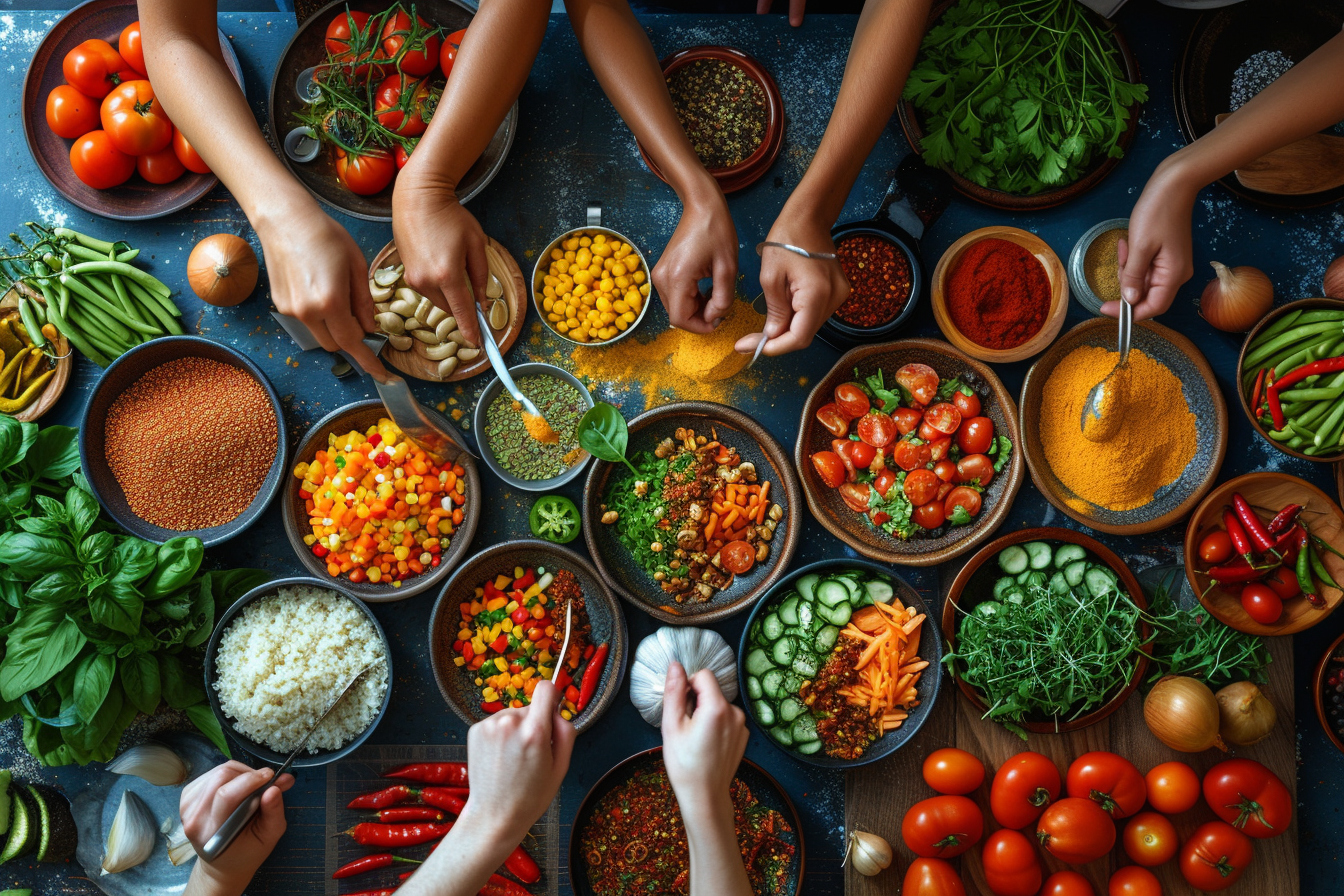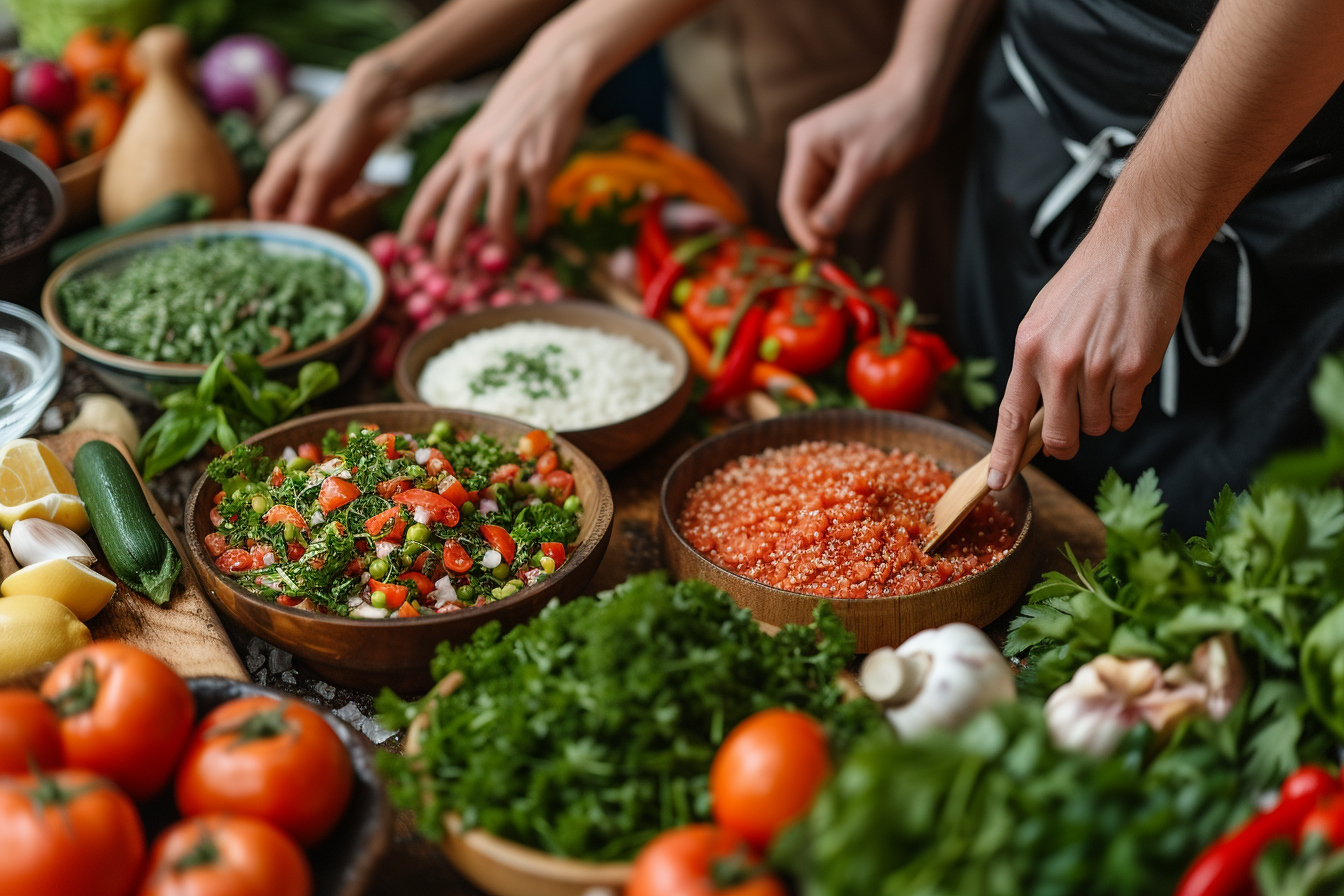Ethnic cuisine offers a treasure trove of flavors and techniques that can transform vegan cooking from mundane to extraordinary. Across the globe, cultures have developed dishes that not only tantalize the taste buds but also comply with plant-based diets, either intentionally or by happy coincidence. The key to mastering ethnic vegan cooking lies in understanding the unique spices, herbs, and culinary practices that define each region’s gastronomic identity.
Exploring the spice palette of global cuisines
Spices reign supreme when it comes to infusing dishes with authentic ethnic flavors. The Middle East features a seductive dance of cinnamon, cumin, and cardamom, while South Asia showcases the heat of chilies, the depth of garam masala, and the pungency of turmeric. To truly capture the essence of these cuisines, familiarize yourself with their spice profiles and learn how to blend them in the appropriate quantities.
Getting spices right
Embrace the art of toasting spices to release their oils and heighten their flavors, a technique often seen in Indian cooking. Experiment with creating your own spice blends instead of relying on pre-made mixes, thereby gaining control over the freshness and strength of the flavors. Grind spices just before use and store them properly to maintain their potency.
Honoring traditional techniques
Many ethnic dishes derive their character from specific cooking methods. For instance, steaming is integral to Chinese dim sum, while grilling over an open flame is essential for the perfect Middle Eastern kebab — even if using plant-based substitutes. Vegan cuisine benefits greatly from the adoption of these techniques, which provide layers of flavor without the need for animal products.
Technique adaptations for vegan cooking
When cooking vegan, replicating the textures and layers of traditional dishes is crucial. Employ methods like smoking with wood chips to impart a rich, meaty taste to tofu or seitan. Simmering vegetables and legumes low and slow, a technique utilized in many African dishes, allows them to soak up the flavours of herbs and spices, resulting in a deeply satisfying meal.
Embracing nutritional diversity

Global vegan cuisine is inherently healthy due to its reliance on a vast array of grains, legumes, fruits, and vegetables. Each region has staples that are both nutritious and flavorful. Quinoa from the Andes, chickpeas from the Mediterranean, and lentils from South Asia are just a few examples of how varied and nutritious vegan staples can be.
Tips for a balanced vegan diet
Diversify your meals with ingredients native to different regions to cover all necessary nutrients. Incorporate protein-rich foods like edamame or tempeh into East Asian dishes or toss black beans into a Mexican-inspired salad for a fiber and protein boost. Don’t forget about complex carbohydrates, healthy fats, and vitamins — you can find these in whole grains like teff in Ethiopian cuisine or avocados in Central American dishes.
Discovering plant-based substitutes
Ethnic vegan cooking often involves finding plant-based alternatives to traditional animal products without compromising on taste. Coconut milk can serve as a rich, creamy base in Thai curries, while jackfruit has a meaty texture that works beautifully in Caribbean stews.
Substitutions that work
Always look for substitutes that bring more than just texture to the dish; they should also contribute to the overall flavor profile. Nutritional yeast, for example, offers a cheese-like depth to Italian pasta dishes. Miso paste provides a savory, umami quality to soups and sauces, a common requirement in Japanese cuisine.
Incorporating regional herbs
Herbal infusion is another hallmark of ethnic vegan cuisine. Mediterranean dishes sing with the brightness of basil and oregano, while South American fare relies on the refreshing punch of cilantro. These herbs are not merely garnishes; they are fundamental components of the dish’s character.
Freshness and application
To make the most of these aromatic wonders, use them fresh whenever possible and add them at the correct time during cooking. Certain herbs, like robust rosemary, can withstand longer cooking times, often seen in Tuscan stews, while delicate ones like parsley should be stirred in right before serving, preserving their vibrant color and taste.
Mastering the art of vegan proteins
Creating satisfying meals means understanding how to prepare and season various vegan proteins. Tofu, when properly marinated and cooked, can be a stand-in for meat in Korean dishes. Seitan, with its chewy texture, absorbs flavors just as well, making it ideal for use in Hungarian paprikash or German sausages.
The magic of marinades
Develop the habit of marinating plant-based proteins for hours, if not overnight, to ensure they’re as flavorful as possible. Craft marinades with a balance of acidity, sweetness, saltiness, and heat to penetrate and tenderize the proteins, making them integral to the overall dish rather than mere additions.
Integrating whole foods into ethnic recipes
Whole food cooking, a principle where foods are utilized in their most natural state, plays well into vegan cuisine. Substituting processed foods with whole grains, beans, nuts, and seeds not only ups the health factor, but also aligns with traditional practices.
Making whole foods exciting
Get creative with ancient grains like amaranth or farro by turning them into hearty pilafs or risottos. Create velvety soups with pureed beans or lentils, a staple in many cultures, ensuring a touch of creaminess without dairy. Simultaneously, roast nuts and seeds to sprinkle on top for texture contrast.
The role of fermentation
Fermentation, a process revered in many cultures, gives vegan cooking an exciting dimension. Korean kimchi, Japanese natto, and European sauerkraut are perfect examples of how fermentation can introduce probiotics and depth to dishes.
Home fermentation
Try your hand at simple fermentation projects at home, which can lead to custom-flavored creations that enhance your vegan meals. Employ these fermented goods to bring zing to salads, sizzle to stir-fries, and boldness to sandwiches.
Final thoughts
Ethnic vegan cooking is more than following a set of recipes; it’s an exploration of the diverse flavors, techniques, and ingredients that the world offers. By delving deep into the established traditions and practices of various cultures, one can elevate their vegan cooking to a truly global and fulfilling gastronomic adventure. By embracing these tips and incorporating them into your routine, your kitchen will become a gateway to international flavors that are boundlessly delicious and inherently plant-based.


